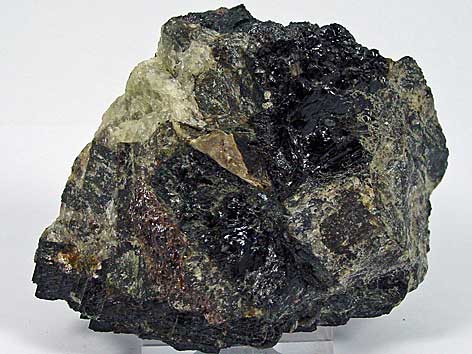
hell graubräunlicher Delhayelit
Berg Rasvumchorr, Chibiny, Kola-Halbinsel, Murmansk, Russland
Stufe: 4,7 x 2,8 cm

Delhayelit xx
Berg Yukspor, Chibiny, Kola-Halbinsel, Murmansk, Russland
Stufe: 3,3 x 3,2 cm
|
Delhayelit |
|
|
Formel: |
(K,Na)10Ca5Al6Si32O80(Cl2,F2,SO4)3·18H2O (9.EB.10; Delhayelith-Gruppe). |
|
Ausbildung: |
orthorhombisches Kristallsystem; farblos, weiß, grünlich- bis bräunlichgrau; plattige bis spätige Kristalle. |
|
Entdeckung: |
1959 - Sahama & Hytönen. Das Mineral wurde benannt zu Ehren von Fernard Delhaye (1880 - 1946), belgischer Geologe, Pionier in der geologischen Erforschung der nördlichen Kivu Region, Kongo (Zaire). |
|
Typlokalität: |
Demokratische Republik Kongo, Provinz Nord-Kivu, Goma, Nyiragongo-Vulkan, Berg Saheru. |
|
Seltenheit: |
selten (mineralienatlas: 10 / mindat: 14 Lokalitäten; 2025). |
 hell graubräunlicher Delhayelit Berg Rasvumchorr, Chibiny, Kola-Halbinsel, Murmansk, Russland Stufe: 4,7 x 2,8 cm
|

Delhayelit xx Berg Yukspor, Chibiny, Kola-Halbinsel, Murmansk, Russland Stufe: 3,3 x 3,2 cm
|
Quellen: Sammlung und Fotos Matthias Kahl; allg. Mineralbeschreibung nach Mineralienatlas.de, Mindat.org, Handbook of Mineralogy, DeWikipedia und/oder Lapis-Mineralienmagazin
© copyright Matthias Kahl